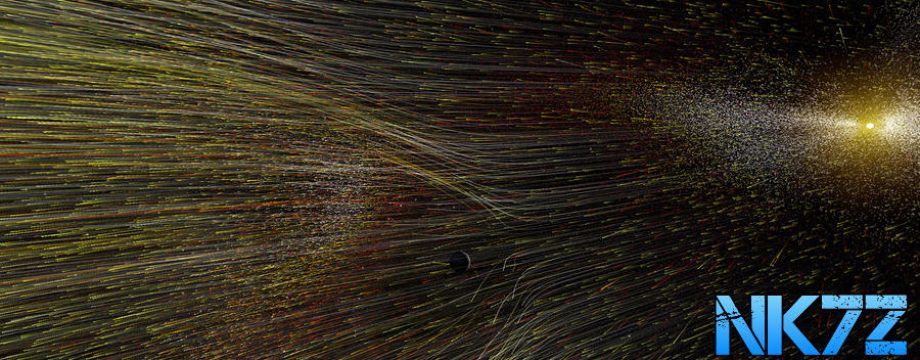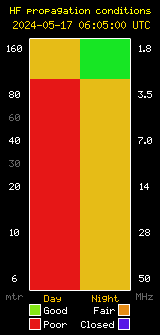![]()
I picked up a blemish version of this tuner several years ago from LDG. I had an issue recently with the tuner, (after five years of contest use), and LDG did such a good job of customer service I decided to do a review of this device. Actually it was in the works anyway, and their customer service was so good I pushed it up in the queue. So here is the Review of the LDG AT-1000 Autotuner. The tuner information from LDG can be found here. BTW, I have purchased the PRO II tuner, and so far it is running just fine, and a bit faster on tune up… It seems a bit quieter as well, so I will review the PRO II after a few months of operation as well.
Use:
I had always wanted an Autotuner, and for the price I could not pass it by. Over the past 4 or 5 years this tuner has performed flawlessly. So far I have connected it to a GAP vertical, an 80 Meter Dipole, a B&W BWD-90 antenna, and a random length wire, about 250 feet long. In all cases it has matched them fine… In fact, it will take my GAP Challenger and match it on 160, a band it was not designed for at all… I also do MARS work, which puts me all over the HF spectrum, and not in the Ham Bands. The 80 Meter Dipole matched almost everywhere, and of course the BWD-90 matched everywhere… I have used the tuner on 5 MHz, 7.5 MHz., 4.2 MHz., (all MARS frequencies) , in addition to the Ham Bands… In all cases it has tuned everything I have been able to throw at it. In fact, I have really found only one area that has been a problem for me, the 5 MHz MARS area. The 5 MHz., ham bands are fine. I suspect it is related to my antenna, and not to the tuner… For ham use, it matches anything to just about any frequency.
Construction:
This is a solid box, made of metal, not plastic, it come in at 6 pounds so it has a nice feel to it as you install it. The meter is easy to read, it is a cross meter type of SWR indicator, so it always shows SWR correctly. This assumes you are running into a 50 ohm load… It has rubber feet on the bottom, and when you press a button the device stays put! The box appears to be built and screwed together, not using the rivets that are becoming popular on some items. Overall the construction on this device is very nice… The sides and top fit nicely, and the entire unit is tight!
Here are the specs of the tuner as per LDG:
- Microprocessor controlled
- Switched L tuning network
- Back-lit cross needle meters
- Continuous coverage 1.8 to 54 MHz
- Power rating HF (1.8 to 30 MHz):
- 1000 Watts Single Side Band
- 750 Watts CW
- 500 Watts Digital (RTTY, Packet, etc.)
- Power rating 6 meters:
- 100 Watts
- Capacitor / Inductor fine tune controls
- Tuning time: 1 to 8 seconds, 4 average
- Antenna impedance: 6 to 800 Ohms (approxamately up to 10:1 SWR)
- Tuning power: 20 to 100 watts maximum, constant carrier
- Relay protection software prevents tuning:
- Greater than 125 watts into a 1:1 SWR load
- Greater than 75 watts into a 3:1 SWR load
- Soft touch buttons
- Includes 6 foot power cable
- Power requirements: 11 to 15 volts DC @ 1 Amp (user supplies power source)
- Enclosure sizes: 13D x 9W x 3H (measured in inches)
- Weight: 6 pounds
It meets all of these specifications and then some! The rear panel of the tuner is simple, In, Out, Power, and Ground. That’s it. Once connected remember, just because you have a good match, does not mean you are getting out a good signal… All it means is your transmitter is seeing a low SWR. This allows your transmitter the option of delivering full power into the tuner, which in turn gets a few more watts to your antenna, and/or more heat into the tuner… You should make efforts to have your antenna be resonant, or at least close to resonance.
Customer Support:
A few days ago I had a problem with the tuner… It made “the smell”, and stopped working… I sent email to LDG, asking about the rebuild cost, expecting to hear a not very decent reply… What I got however was a reply within a day, indicating that LDG could, and would rebuild it if needed, for a fee of no more than $175.00. This seems more than fair, so I sent in my tuner, and about two weeks later, got an email indicating that it has been shipped…
It arrived, and to my surprise LDG repaired it free of charge! Yes, free, I even told them up front and in writing that I was the original owner, and that it was out of warranty. Now that is customer service! As a result I bought an IT-100 tuner for my 706 MKII G, and the trailer. I am considering the purchase of the latest AT-1000 and may get it today at HRO in Portland. I assume it works as well as the AT-1000, and I believe it gives me instant tune, with no button press, so I think I need to stay with the same company… As soon as I get a chance to use the IT-100, and the new AT-1000 PRO II I’ll review them here as well…
Overall I love the AT-1000 tuner, you press the button, and after about 10 seconds of noise, (yes it is noisy, imagine if you will, a tin can full of marbles… Now shake it, hard for 10 seconds), the tuner indicates that things are in tune… The 10 second tune only happens when you first set it up, after the tuner has it’s settings in memory, it takes about 2 seconds to tune. I have had one instance of a bad tune, but I suspect it was related to the failure, as it happened only one time, in five years, and within a week of failure.
Pros:
- Tunes almost anything
- Small
- Easy to connect
- Well built
Cons:
- Noisy when tuning
- Meter light is incandescent, not LED, so it burns out
- Meter could be a bit larger
- Not full Auto, I want it to just tune based on my Icom’s band switch
- Wall bug to light the incandescent lamp and drive the relays… AC would have been better
Conclusion:
Would I buy this device again, yes, in fact I bought an AT-100 for the trailer as a result of my using this tuner, and my dealing with LDG Customer Service. I may buy the latest version of this tuner today at HRO, then sell this one…
I am floored at the service level LDG is offering. Now days, any company that honors a product, and actually gives a damn about their reputation is OK in my book. Between that, and the tuner’s almost flawless performance over the past five years, I am very happy with this device from LDG. See the review of the LDG AT-1000 PROII.
Sponsors







I have owned my AT-1000 since new (14 years) and have not had any issues with it. Like another ham stated the light burns out quickly but I did put an LED in mine it doesn’t light the whole window very well but can see what’s going on nonetheless. I run a Toyko Hy Power 600 watt autotune amplifier with it and no issues to report. I have owned many LDG products and auto tuners and have never had an issue with anything that they have made. Recommend their products and hope they continue making quality items. MFJ should take a page out of LDG’s handbook. Keep up the good work! Brad, W0DXX in Colorado.